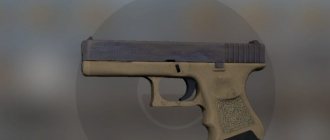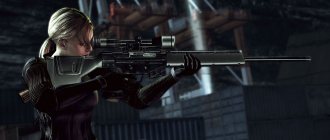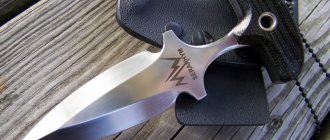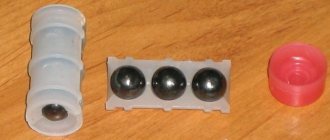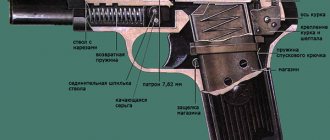One of the most famous is the myth of the English longbow as a superweapon. True, back in the 19th century, Sir Ralph Payne-Gallwey questioned it and showed the serious advantages of the crossbow and the Turkish bow. But he acted carefully. Apparently, he understood that this national myth is one of the pillars on which the kingdom stands.
Payne-Gallwey's book is already a century and a half old. Since then, nothing smart on this topic has been translated into Russian. Our ideas about bows and crossbows are very outdated.
However, one factor has emerged that greatly influences our views and literally programs us. The most important of the arts, cinema, breathed new life into the myth of the longbow - after all, on the screen, the bow often acts as a prodigy, successfully defeating both infantrymen with shields and armored cavalry.
Let's figure out what really happened.
Longbows were in service in England in the 12th century
The longbow has actually been around for a very long time. However, in England in the 12th and 13th centuries, archers used crossbows.
The “longbow” appeared in the English army only at the end of the 13th century. The English king Edward I met it during the conquest of Wales, appreciated it, and not only adopted it, but ordered that his subjects with a certain income level have bows and arrows. Crossbows did not completely disappear from the army; they were used in the defense of fortresses. And the British even had them at the Battle of Agincourt (in 1415).
Evgeny Bashin-Razumovsky - expert on historical issues:
“To raise a good archer, you need to start with his grandfather.”
Shooting with a crossbow did not require such long training. It was more powerful and required less space, but was inferior to the bow in rate of fire. In addition, the crossbow was much more difficult to manufacture.
Advantages and disadvantages
What can be said about this method of shooting?
Advantages.
First, the further the string is pulled, the more energy the bow stores. And the more kinetic energy the arrow will receive.
Obviously, when pulling “behind the ear,” the energy stored by the bow will be maximum.
Secondly, there is little chance that the bowstring will touch clothing or armor. Even a helmet does not create a serious obstacle with this method of shooting.
Flaw.
The hand of the pulling hand can change its position from shot to shot, located slightly higher, lower, to the left or to the right.
This will affect accuracy, because a consistent stance is the key to high accuracy of fire. The position of the hands and head should be uniform, just like that of a rifle shooter.
The famous archer Robin Hood lived during the time of Richard the Lionheart
There are three heroes of English history whose adventures are most often filmed. These are King Arthur, Robin Hood and Sherlock Holmes. The characters are fictitious - there is little stopping directors from fantasizing. Robin Hood in this trio, of course, comes first.
Evgeny Bashin-Razumovsky - expert on historical issues:
Of the literary heroes, only three musketeers from French history can compete with him in the number of film adaptations.
Writer Walter Scott wrote Robin during the time of Richard the Lionheart, and with his light hand the robber continues to star in the same films with this king.
But in England, under Richard, the longbow had not yet been adopted!
Bows spread throughout England during the time of Edward I, and archery competitions were introduced by King Edward III in the mid-14th century. That is, Robin Hood could at best be his contemporary, not Richard's. And he could rather fight the French at Crecy rather than participate in the Third Crusade.
Introduction to weapons
Both types belong to throwing weapons and have the same operating principle. It consists in the accumulation of energy by an elastic element and its transfer to the projectile being thrown through a bowstring.
If the crossbow has been known since approximately the 6th-5th centuries BC, then the bow is much older: its age is several tens of thousands of years.
The classification of bows includes three types:
- Classic, designed for sport shooting.
- Traditional, which in turn are divided into simple and recursive.
- Block.
Crossbows can also be made with either recurve or block bows. Based on the type of stock, they are divided into pistol and rifle.
The longbow's pulling power was 60-80 kilograms
Most English shooters in battle used yew bows with a tension of 30-40 kilos, with standard arrows (a yard long and with a socketed tip). The goal was not to hit the viewing slot of a knight's helmet, but to ensure a high density of “fire” - so that the arrows would fall like rain, injuring the warriors or their horses.
By the way, horse archers cannot create such density.
And individual outstanding shooters fired from bows with a power of 60-80 kilos. Legends were then made about them. Here I remember Odysseus, whose bow could not be drawn by numerous rivals who wooed Penelope.
Evgeny Bashin-Razumovsky - expert on historical issues:
The surviving English combat bows of the Middle Ages have an estimated draw force of 27-45 kilograms. For longbows found on the Mary Rose, which sank in 1545, this value varies from 36 to 90 kilos (average 45-50).
Bows with karakki are late, from the 16th century; they were used during the reign of plate armor and were not “field” bows. The use of bows during naval battles may have put forward other requirements for weapons.
Practice area and target
Archery is carried out in a specially equipped room or outdoors. In the latter case, it should be a fenced area that excludes the entry of people and animals. The target will help judge the results. It must meet the following requirements:
- be visible and clearly readable from a great distance;
- hold the arrow tightly;
- maintain the integrity of the arrow;
- do not collapse from numerous hits;
- withstand any weather without deterioration from rain, frost, or extreme heat.
Homemade targets do not meet these characteristics and quickly fail. Therefore, it is wiser to purchase a model from trusted companies. There are several types of targets:
- Paper. Made from cardboard, reinforced or thick paper with a grid of multi-colored or uncolored circles, as well as images of people or animals. Dimensions – from 30 x 30 cm.
- Shields can be stationary or portable. They are made of isolon in the form of a flat surface (for attaching paper targets), a cube or a parallelepiped. The dimensions depend on the purpose, type of bow, experience of the shooters, and distance. A cube with sides of 30 cm is designed for hunters; shield 50 x 50 x 20 cm – for recreational shooting; 50 x 50 x 10 cm – for children and teenagers; 65 x 65 x 20 cm – for beginners.
- Electronic. It is a wall screen that displays footage taken in real conditions. The archer uses arrows with a special soft ending. At the moment of the hit, a dot appears on the screen indicating the number of points.
- Children's stands. Today's manufacturers offer a lot of different options for specialized targets, and children's stands are no exception. Most often, such shields are a metal sheet on which markings or a target are applied.
3D targets are also popular. They are reliable, durable, ensure arrow safety and easy removal. They do not accumulate dust and are convenient for transportation.
Paper
Portable shield
Children's
The English longbow is the most powerful of combat bows
A compound bow with a reverse bend is able to send an arrow with greater force, that is, further. The speed at which the bow's arms straighten plays an important role here. And it depends on the materials from which it is made. Wood imposes limitations, which is why simple bows were made so large. The advantage of the longbow is, first of all, its simplicity and low cost of production.
In addition, this bow is specifically for infantry. Composite, small in size, can also be used by cavalry. For shooting from the saddle, the Japanese created an asymmetrical long bow, the yumi, with a short lower arm. Crossbowmen could also shoot from horseback, and English horse archers were a kind of dragoons. They rode on horseback, but fought dismounted, and sometimes even took off their shoes.
Evgeny Bashin-Razumovsky - expert on historical issues:
Book authors and directors need to stop putting bows in the hands of fragile girls. This is not a sniper rifle that can hit even in the hands of a girl or teenager. Combat bow shooting is a lot of work!
Myth 4. The bow is a weapon for fragile and weak fighters
Still from the movie “Robin Hood: The Beginning”
In movies, books and games, archers are usually used by those who lack the strength to fight hand-to-hand. It is unlikely that a powerful barbarian with bulging biceps will take small arms - more often the latter is preferred by various elves, fragile girls or teenage boys, like Atreus from the game God of War.
In fact, to shoot a bow effectively, you need well-developed arm and back muscles. After all, the tension force is GF Asbell. The Traditional Bowyer's Bible medium weapons start at 35 kilograms, and large English ones can exceed 70.
Try performing a machine lever row with this weight while holding the handle with three fingers. And you will understand that an archer must have decent physical fitness.
Modern sporting compound bows, of course, require much less effort to tension the bowstring. But in the typical dark Middle Ages they were not to be found.
An arrow from a bow pierces a shield
In the novel “The White Company” by Arthur Conan Doyle, an arrow from an English longbow pierces the shield right through. The archer, competing in shooting range, managed to send this arrow as much as 630 steps.
It is known that the Parthian horse archers caused a lot of problems for the Romans, and their arrows pierced the scutum. But when this happened, the arrows did not pierce the wooden shield right through - they got stuck.
Could breaking through the shield still happen? An eastern military treatise describes a curious incident when a Turkmen, dressed in chain mail, removed the door of a garden and made it a shield. The archer fired an arrow that pierced the door, hit the chest and came out of the back. Seeing such a shot, the soldiers accompanying the Turkmen ran away in panic.
Then the shooter said: “There was a hole in that door. The sun was behind the Turkmen and was shining through this gap. I shot accurately and hit the hole [and through it] straight into that man. And they thought that my arrow pierced the door, the chain mail and the man. This put everyone in fear."
What arrows fly long distances?
Like bows, not all arrows are suitable for long-range shooting . There are a number of requirements for each boom component, which we will now look at.
- The arrow shaft should be extremely light (for example, made of light cedar). However, its lightness should not reach extremes, because when fired, a powerful bow will easily bend a thin arrow, reducing the accuracy of hitting the target.
- The tip must correspond to the lightness of the shaft, i.e., not disturb the centering of the arrow, and therefore also be light.
- The fletching of the arrow must be straight, because the screw shape will spin the arrow and take away some of the energy for flight. Practice shows that the length of the feather for long flights is required to be short, as is the height. The minimum dimensions of the fletching will allow the arrow to reduce the force of air resistance and save energy.
All these parameters are purely advisory in nature, because after observing shooters at competitions, it is not difficult to notice that most often they use the same set of arrows for shooting both short and long distances.
Arrows from a bow pierced plate armor
How effective are arrows against armor?
"Bodkin" - the armor-piercing arrowhead of an English bow - confidently pierces chain mail at a short distance. But plate armor was a serious problem for arrows; a heavy crossbow bolt was much more effective.
At the same time, history knows many examples when chain mail with underarmor, leather or quilted cotton armor provided reliable protection against arrows. After all, in battle, shooting is carried out not only at point-blank range, and not everyone has arrows with steel armor-piercing tips.
However, for a serious wound it is not always necessary to pierce the armor. Thus, the fourth day of the Battle of Yarmouk in August 636 is known in Arab history as the “day of the gouged out eyes.” Then the Byzantine archers, firing clouds of arrows, blinded about 700 Muslim soldiers.
A striking illustration of the effectiveness of the bow is the murdered English kings.
In the turbulent year of 1066, the Viking leader Harald Hardrada was killed by an arrow through his throat at the Battle of Stamford Bridge. And the winner, the English king Harold Godwinson, soon died at Hastings - an arrow hit him in the eye. All of them had arrows hit unprotected places. In 1100, the English king William the Red was killed while hunting with an arrow - he was not wearing armor. And the chain mail did not save Richard the Lionheart from a crossbow bolt.
Best Compound Bows for Shooting
The features of such models include low weight and increased firing power. The design is based on eccentric mechanisms connected to each other using several cables.
The block system makes drawing the bowstring easier, making it easier to aim and concentrate. This allows you to shoot more accurately and not get tired when holding the weapon in your hands for a long time. These bows are used for hunting, recreational or sporting purposes.
Mathews VXR 31.5
5
★★★★★
editorial assessment
100%
buyers recommend this product
The main feature of the model is the ability to quickly amplify thanks to Switchweight technology. Its use allows you to adjust the tension by replacing modules.
The compactness and lightness of the projectile ensures ease of holding, aiming, and shooting accuracy in intensive mode.
The weight of the bow is 1.9 kg with a base size of 6 inches. The Crosscentric Cam system guarantees smooth bowstring retraction and arrow speeds of up to 105 meters per second. The ergonomic EngageGrip handle reduces vibration and promotes a secure grip.
Advantages:
- light weight;
- ease of holding;
- customization;
- no vibration.
Flaws:
- high price.
The Mathews VXR 31.5 is worth purchasing for intense shooting by experienced athletes and hunters.
Man Kung MK-CBA5 Thorns
4.9
★★★★★
editorial assessment
95%
buyers recommend this product
The weapon's draw length ranges from 19 to 31″, allowing it to be used by archers of any height. The ergonomic handle is made of aluminum and equipped with a rubber pad for easy grip. Carbon fiber arms are durable and light weight.
The initial flight speed of the boom is 95 meters per second, the distance between the axles is 76.2 cm. A design feature is a bifurcated riser, which reduces the load.
Along with the bow, the kit includes a shako, a sight, arrows, a stabilizer, a shelf, etc. This makes it possible to expand the scope of use of the weapon and begin using it immediately after purchase.
Advantages:
- flexible setup;
- rich equipment;
- Ease of use;
- light weight;
- strength of materials.
Flaws:
- requires individual settings.
Man Kung Thorns are suitable for use in various fields: for shooting training, hunting or sports.
PSE Vision
4.9
★★★★★
editorial assessment
94%
buyers recommend this product
The handle of the model is made of light alloy aluminum, due to which the total weight of the bow is only 1.9 kg. The package includes a shelf for arrows and a tension relief block. It allows you to reduce the load on the arcs and extend the service life of the weapon, and at the same time eliminates the risk of a blank shot.
Draw length ranges from 12 to 30 inches. Wide range of adjustment options provide comfortable customization. Greater flexibility of the shoulders guarantees that the arrow reaches a maximum flight speed of up to 110 m/s, which increases the lethal qualities of the bow.
Advantages:
- light weight;
- customization;
- durability and strength of materials;
- excellent range.
Flaws:
- lack of arrows in the set.
PSE Vision is recommended for hunting and will definitely appeal to experienced shooters.
READ ALSO
8 best night vision devices
Bear Archery Marshal
4.8
★★★★★
editorial assessment
90%
buyers recommend this product
Excellent balancing and small dimensions provide comfort when shooting. The model belongs to the Ready To Hunt line. The extended configuration allows you to start using it immediately after purchase. It includes a shelf, a shako, a sight, a stabilizer, and a peep-site.
The tension force is 50-60 lbs, the arrow speed is 97 m/sec. The monobloc design eliminates the risk of shoulder damage while using the bow. The possibility of a smooth start guarantees high hit accuracy and increases the working life of the bowstring.
Advantages:
- extended equipment;
- robust design;
- light weight;
- individual adjustment;
- accurate shooting.
Flaws:
- difficulty of transportation.
Bear Archery Marshal can be used in the most difficult conditions. A reliable choice for hunting, bowfishing and regular training.
English archers during the Hundred Years' War put an end to the knightly cavalry
The English bow made a very bright appearance during the Hundred Years' War. But the main victories of the longbow occurred in the 14th century (Crecy, Poitiers), when plate armor had not yet become widespread. And in the Battle of Agincourt, the fatal thing was that the French cavalry got stuck in the mud...
But despite the triumph of the longbow, heavy armored cavalry did not disappear anywhere, even on the Island. To combat it, all means were good: a forest lance, a firearm, and Wagenburgs. According to the Burgundian military regulations of 1473, pikemen knelt so that archers fired from behind them. They could fire a volley almost point blank! In England, they began to use handguns already during the War of the Roses - in the second half of the 15th century.
Why didn’t the archers scatter before the heavy cavalry rushing towards them? They were given stability by rows of driven stakes and heavy infantry, which prevented the proud knights from crushing the harmful shooters. But in the Battle of Pathay (1429), the British did not have time to “dig in” and the archers were swept away by the blow of the French cavalry. The defeat was complete. At Formigny (1450), the English army, despite its numerical superiority, was defeated when it abandoned fortified positions during the battle.
I wonder why textbooks don’t tell about these Stoletki battles?
Evgeny Bashin-Razumovsky - expert on historical issues:
At the battles of Cocherel and Auray (both in 1364), English archers could not stop the dismounted French knights, who attacked them in close formation. Arrows were powerless against armor and shields.
Probably, the Roman legion, if it had arrived in the 14th century, with competent command, would also have been too tough for the English archers.
The bow was more effective than smoothbore guns
Sir Ralph Payne-Gallwey believed that a hundred skilful marksmen from Waterloo with Brown Bess flintlocks would be beaten by a hundred archers from Crecy and Agincourt (at a distance of 120 yards). For every bullet, archers would respond with at least six arrows, and they would shoot much more accurately and effectively.
But this is a “battle of spherical horses in a vacuum.”
Grigory Pastushkov - field expert in reserve:
And if you add Roman legionnaires to this competition, you can play “rock, paper, scissors.”
Why didn't the bow make a triumphant return? Each type of weapon had its advantages.
The firearm has noticeable advantages in armor penetration and has a greater stopping effect. And the wounds were more severe: when they hit the limbs, the bullets crushed bones and turned people into disabled people. The psychological factor was also at work.
Archers shot more accurately and faster, but this required long, many years of training.
In this competition, firearms won, but not immediately. And not everywhere at the same time.
The English bow and crossbow in continental Europe gave way to firearms by the middle of the 16th century. First of all, in the infantry - accuracy did not matter much when the shooting was “in squares”. In the 17th century in Eastern Europe, the bow was preserved in the cavalry, including the Polish armored cavalry.
Evgeny Bashin-Razumovsky - expert on historical issues:
On the outskirts of the world, bows and crossbows were used later. In Scotland, the last widespread use of bows dates back to 1665, during the Clan Wars. In the North Caucasus, bows and crossbows were used even at the beginning of the 19th century.
But the bow lost not only because it penetrated armor worse. In the 18th–19th centuries, armor was practically not used in European armies (with the exception of a few cuirassiers and pioneers). “Natural archers”, Crimean Tatars or Bashkirs, could no longer defeat the enemy by bombarding him with arrows. Fire from rifles and carbines kept them away, rendering bows ineffective.
The French, who were hit by arrows, were disappointed.
The crown of bow evolution
For many centuries, the crossbow remained the most accurate and powerful long-range personal weapon. It is a powerful steel or composite bow connected to a wooden stock. The crossbow string, when taut, is fixed by a hooking mechanism, so the shooter has the opportunity to calmly take aim without wasting effort on holding it. A powerful bow allows you to shoot a heavy arrow from a crossbow, which has a greater range and penetrating power compared to a regular bow. And the best aerodynamic characteristics of a crossbow arrow (bolt) allow you to shoot it accurately and with great accuracy.
Story
The idea of combining a powerful bow and a wooden stock with a mechanism for fixing the bowstring first appeared in the era of antiquity. Around 400 BC, Zopyrus of Tarentum invented the gastraphetus, which used body weight to pull the bow string. To fix and release the bowstring, it used a device similar to the trigger mechanism of a catapult. Gastraphetes could shoot an arrow 1.8–2 m long at a distance of 150–200 meters and was superior in firing range to an ordinary bow.
The Romans were also able to appreciate the advantages that the use of hand-held throwing mechanisms on the battlefield provided. However, they preferred torsion mechanisms, in which the energy for the shot was created by tightly twisted ropes of tendons. However, as the relief images demonstrate, a real crossbow was also known to them, although it was used primarily as a hunting weapon.
A crossbow with a compound bow and a cranekin from the 15th century. Kunsthistorisches Museum, Vienna
After several centuries of oblivion, the crossbow was “reinvented” in Western Europe at the beginning of the 11th century, possibly having been brought here from the Middle East via northern Africa and Spain. Thus, the Normans used crossbows against the Saxons at the Battle of Hastings in 1066.
The most important stimulus for the spread of these weapons were the Crusades, during which European chivalry was faced with a new enemy and previously unknown tactics. In the Middle East at this time, the crossbow was actively used by both sides, including during sieges and defenses of fortresses, during which this weapon was most effective.
One of the admirers of this weapon was the crusader king Richard I the Lionheart, who revived the art of crossbow shooting in France, which had fallen into decline. He himself, according to contemporaries, brilliantly wielded this weapon and personally killed many people with it. Ironically, Richard himself was mortally wounded by a crossbow arrow during the siege of Chalus Castle in France in 1199.
Since the end of the 12th century, the crossbow has become widespread in the ground forces and navy, among horsemen and infantry, being used more often in sieges than in field battles. Detachments of crossbowmen, both mounted and on foot, became increasingly numerous and played an increasingly important role on the battlefield. The Genoese were especially distinguished in this field, whose troops enjoyed a good reputation and, for money, served in many large European armies of that time.
A crossbowman with an English collar in the removed position, which is suspended from his side. Fragment of a miniature of the Chronicles of Froissart. 1410
During the Barons' Rebellion of 1215–1217 in England, the army of King John I the Landless, sent to the rescue of Lincoln, who was besieged by rebels, consisted of 400 knights, some infantry and 317 crossbowmen. During the battle, the royal crossbowmen rained down a hail of arrows on the rebels, felling the knights and their war horses, “like pigs in a slaughterhouse.”
.
Crossbowmen also fought on the opposite side. When the rebel garrison besieged in Rochester capitulated in 1215, King John the Landless ordered the captured knights to be released for ransom, but “he ordered the crossbowmen who had killed too many knights and warriors during the siege to be taken to the gallows.”
. This unenviable fate awaited them for the role they played in the battle.
Detachments of warriors armed with crossbows acquired particular importance as part of the garrisons of fortresses and castles. In 1250, the garrison of Safed Castle in the Holy Land included 1,700 people. Among them were 50 knights, 80 sergeants, 50 turcopoles, 300 crossbowmen, 400 slaves and 820 servants. The garrison of Evreux in 1202–1203 consisted of 50 knights, 20 mounted sergeants, 25 foot crossbowmen and 300 foot sergeants.
The destructive power of the crossbow was so great that it was considered an inhuman weapon. In 1139, the Second Lateran Council even banned its use against Christians, but made an exception for wars against infidels, pagans and heretics. On the capitals of the columns of the Cathedral of St. Sernin's devil is depicted pulling a crossbow. Late 11th century, Toulouse
In the inventory of weapons stored in 32 fortresses of the Capetian domain in France, among other weapons, 278 crossbows and 265,960 crossbow arrows are listed. The inventory of the armory of the castle of Passy-sur-Hère, located in Normandy, includes 26 crossbows with stirrup, 38 crossbows loaded with both legs, and 5 larger crossbows.
The arsenals of large cities matched the weapons reserves of the fortresses. An inventory of weapons stored in the French city of Chinon lists 4 large crossbows, 3 double-footed crossbows, 13 stirrup crossbows, as well as 2,000 arrows for large crossbows, 10,000 arrows for “double-legged” crossbows, and 33,000 arrows for crossbows with stirrups. In 1314, Venice had 1,131 crossbows in its arsenal.
Design
The earliest models of crossbows had the simplest design. Onion
, attached to the stock, was wooden; the bowstring in such crossbows was pulled by hand. To do this, the warrior lowered the crossbow with his bow down, stood on it with his feet, or put his foot into the stirrup attached to the front. The range of such a weapon did not exceed 100–150 meters, and an arrow fired from it was dangerous only for a warrior who was not protected by armor.
Crossbow and elements of its design
When the Crusaders in the East became familiar with the design of compound bows, bows for crossbows also began to be made from various materials. Their base was still wooden. As a rule, ash wood was used. The inner side of the bow was glued with plates made of whalebone or horn, which worked in compression, and the outer side - with tendons, which worked in tension.
All parts were attached to the wooden base using glue, which was made from dried fish bladders. At the same time, the horns of the crossbow were made noticeably thicker and more powerful than those of the bow. The specific gravity of the tendons was up to half of their total mass.
During the drying process of the finished product, which took from one to three years, the horns of the bow bent in the opposite direction, so that when the bowstring was simply pulled on them in a “quiet” position, they were already very tense. To pull such a weapon, it was necessary to apply an effort equivalent to lifting from 70 to 150 kg of weight. Accordingly, it became increasingly difficult to pull the bowstring of such a crossbow by hand.
Over time, simple mechanical devices began to be used to cock the bowstring. The first such mechanism, known at least since the beginning of the 13th century, turned out to be a belt hook
, or
claw
. To cock the bowstring with its help, the crossbowman turned his weapon with the bow down and hooked a metal hook suspended from his waist belt to the center of the bowstring. Then he raised his right leg and inserted it into a stirrup attached to the front of the weapon. Straightening his knee and straightening his torso, the crossbowman pulled his weapon down, applying significant force to the bowstring connected to the belt hook. This way he could quickly and easily pull the string along the crossbow stock to the hook.
It was a simple but at the same time effective method that used the strong muscles of the legs and back. It made it possible to quickly draw the string of a crossbow that was too tight to use your hands for this purpose, but not powerful enough to use a collar for this purpose.
Methods for cocking a crossbow bowstring: 1) Simply with your hands 2) Using a belt hook 3) Using a “goat leg”
In the 14th century, a type of tension hook called the “goat leg”
. This device was a rotary lever with a double fork. The end of the lever rested against a transverse iron pin on the crossbow stock, the bowstring was caught with a fork and pulled by the lever to the hooking device. In this way, the shooter was able to provide a force of 150–200 kg, necessary to pull the most powerful crossbows of that time. Theoretically, it could even be increased to 300 kg, but in this case the lever would be too long and inconvenient.
A serious advantage of this device was that it could be used by both foot and horse riflemen. The latter, when pulling the crossbow, needed to put their foot into the stirrup of the crossbow, and the infantrymen could simply rest the lower end of the stock into the ground. The simplicity and convenience of this lever were so obvious that even long after crossbows were removed from service in armies, it was still used for a long time to draw steel bows of small hunting crossbows.
The goat's leg is a simple, but at the same time very effective mechanical device for cocking the bowstring of crossbows. Artillery Museum, St. Petersburg
Due to the successes of metallurgy in the last quarter of the 14th century, gunsmiths began to equip crossbows with steel bows. While maintaining the same dimensions, such a bow had more power, was lighter, more durable and more resistant to bad weather. To tension the bowstring of such a crossbow, a removable rack and pinion gate, or cranekin,
. Its mechanism was attached to the crossbow stock via a belt loop. The bowstring was captured by hooks connected to a gear rack. By means of a gear train enclosed inside the mechanism, the bowstring was tensioned and cocked into the firing position. Kranekin made it possible to create a tension force of 1100–1200 kg. To pull the string 14 cm to the hook, the shooter needed to make about 30 turns of the handle and spend 35 seconds on it. This system is most widely used in Germany, Flanders, the Czech Republic and Switzerland.
In parallel with it, a removable “English” collar
, consisting of handles and intermediate blocks attached to the crossbow stock. With a force of 20 kg applied by the shooter, such a gate was capable of creating a tension force of 800 kg, which made it possible to cock the most powerful crossbows, spending only 20–30 seconds. At the same time, it was somewhat cumbersome and took time to attach to the crossbow, further reducing its rate of fire. For combat crossbows, such a system turned out to be too imperfect, so it was used in models intended for hunting.
German cranekin of the 15th century
Hook
The crossbow consisted of a simple and very reliable mechanism in which the cocked bowstring clung to the protrusion of the “nut” that rotated around its axis.
The latter was usually carved from bone or cast from bronze. When fired, the cranked release lever came out of the recess of the “nut”, and the latter, turning, released the bowstring and the arrow linked to it. The cutout on the ledge, to which the bowstring clung, also served as a sighting device
.
This mechanism ensures a smooth, soft trigger even for high-power weapons. It is also important that it holds the string exactly in the middle of the arrow axis, which has a beneficial effect on shooting accuracy.
The simplest hooking mechanism of a crossbow, which includes a “nut” that rotates around its axis and a trigger lever
Bowstring
for the crossbow, they were made from very durable linen or hemp rope or a thick cord twisted from rawhide straps or ox sinews. Sometimes the bowstring was waxed to reduce friction and wear and increase its water resistance. To tighten the string on a powerful crossbow with a compound or steel bow, a special device was used.
The bowstring stretches from repeated use, so it is the most frequently replaced part of the crossbow. The bowstring also stretches when wet, so the light rain that fell on the eve of the Battle of Crecy in 1346 could significantly reduce the shooting efficiency of the Genoese crossbowmen who took part in the battle on the side of the French. To protect the weapon from exposure to bad weather, it was stored in a special leather case outside the battlefield.
Crossbow bolts
They shot from a crossbow a short and massive wooden arrow 30–40 cm long, the so-called bolt
. The most common material for a bolt shaft was yew. An arrow made from it, 30 cm long and 1.3–1.6 cm thick, weighed approximately 70 g and had the greatest flight range. The largest bolts weighed four times as much and were designed to pierce protective armor.
The arrow expanded slightly towards the middle; to ensure balance in flight, its center of gravity was shifted towards the tip. To stabilize the flight path, wings were used, which were cut from thin leather or wood. Sometimes the tail was attached in a spiral so that the bolt rotated in flight and had increased trajectory stability.
The tips, as a rule, had a petiole design and a pyramidal head with a square or diamond-shaped cross-section. Large bolts had a thicker head and shorter cutting edges. Such a bolt easily pierced chain mail and plate armor, but ricocheted when it hit the curved armor of a knight’s armor even at a slight angle. The tetrahedral tip with four points at each corner had less penetration, but never slipped, which happened with tips of other shapes.
German crossbow with cranekin of the 15th–16th centuries. Hermitage, St. Petersburg
Firing range
In the 15th century, the most powerful crossbow with a steel bow could shoot at a distance of up to 350 meters. A crossbow with a compound bow could shoot at 230–250 meters, which is the same range as a longbow. However, it should be noted that at extreme distances, an arrow fired from a bow, hitting the target at takeoff, is no longer capable of causing significant damage to it. In addition, a light arrow flies to the target along a suspended trajectory and is blown away by the wind, which makes it difficult to shoot accurately at such a distance, even against such large targets as enemy infantry formations.
On the contrary, even a lightweight 70-gram crossbow bolt has noticeably more favorable aerodynamic characteristics, which increase the accuracy and efficiency of shooting at group targets. Aimed shooting at single targets with a crossbow is approximately the same as with a bow - about 80 meters. But at this distance, a crossbow bolt can easily penetrate any protective armor. At the same time, an arrow fired from a bow pierces only chain mail, turning out to be powerless against plate armor and, even more so, knightly armor. This feature made it possible to successfully use the crossbow against archers, forcing them to stay at a distance from which their shelling no longer had destructive power.
A crossbow with an “English collar”, bolts for shooting and a wooden quiver for storing them, paveses, a “goat’s leg” and a cranekin. Artillery Museum, St. Petersburg
While superior to the bow in terms of accuracy of fire, accuracy of hits and impact force of the arrow, the crossbow was at the same time inferior to it in terms of rate of fire. While a trained archer could fire a dozen arrows in a minute, a warrior armed with a crossbow could respond with only four to five arrows from a light crossbow, pulled using a belt hook or “goat leg,” and one or two from a powerful crossbow with a steel bow.
A skilled archer hit a moving target at a distance of up to 75 meters. If he missed, he could immediately fire a second arrow since the target was still in range. From a crossbow, the target had to be hit from the first shot, since in case of a miss, it took too much time to reload the weapon, during which the target had the opportunity to leave the affected area.
At the same time, while loading his crossbow, the warrior remained completely defenseless against the enemy and therefore usually acted under the cover of a large pavese shield, which his partner carried and installed. All this made it difficult to use a crossbow in a field battle. However, it was indispensable in the defense and siege of fortresses.
Literature:
- Payne-Gallway R. Book of Crossbows. History of medieval throwing weapons. M., 2007 – 415 p.
- Shokarev Yu. V. History of weapons: Bows and crossbows. – M.: AST, 2006. – 176 p.
- Contamine F. War in the Middle Ages. – St. Petersburg: Yuventa, 2001. – 414 p.
- Italian men-at-arms of city garrisons 1260 – 1392. – Military-historical almanac New Soldier No. 169.
- Matthew Bennett, Jim Bradbury, Kelly De-Fry, Ian Dickie, Phyllis Jestice. Wars and battles of the Middle Ages 500 - 1500. – M.: Eksmo, 2006. – 264 p.
- Uvarov D. Medieval throwing machines of Western Eurasia. Part 3. Performance characteristics - https://www.xlegio.ru/throwing-machines/middle-ages/western-eurasia-medieval-throwing-machines/performance-characteristics.html
